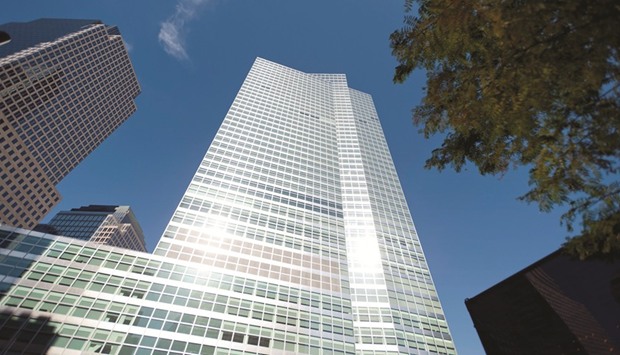Goldman Sachs Group’s fixed-income revenue was so unexpectedly weak in the first quarter that last week’s earnings report left the stock tumbling and Wall Street buzzing over what happened. Part of the answer is now emerging.
Traders got burned by a constellation of souring debts tied to a coal-mining giant and struggling mall retailers, as well as wagers linked to the US dollar, according to people familiar with the matter. The bank incurred tens of millions of dollars in losses on companies including Peabody Energy Corp and Energy Future Holdings Corp Borrowings from retailers including Rue 21, Gymboree Corp and Claire’s Stores also stung, the people said.
The behind-the-scenes losses contributed to a disappointing profit, announced April 18, that left analysts and shareholders puzzling about what went wrong. The firm’s fixed-income desks handling bonds, currencies and commodities generated $1.69bn in revenue, about $340mn below estimates and barely higher than a year-earlier, which was the worst first quarter this decade. Chief executive officer Lloyd Blankfein blamed the “operating environment,” but it was the same one that had helped every major US rival post double-digit increases.
“I’m still confused,” Brennan Hawken, an analyst at UBS Group, told Goldman Sachs executives on a conference call to discuss results. Beating last year’s numbers should’ve been relatively easy, and solid profits flowed in from “everybody else,” he said.
Deputy chief financial officer Marty Chavez told analysts that clients were less active in trading commodities, currencies and credits amid low volatility in some markets. Goldman also has a different mix of clients, he said, with competitors boasting larger lending books and more corporate customers.
But for some investors, the comments on credit became a point of confusion as rivals including Bank of America Corp and Morgan Stanley cited it as an area of strength.
Under partner Adam Savarese, who heads Goldman Sachs’s distressed-debt desk, the bank loaded up on borrowings from energy companies and other beaten-down names, the people said, asking not to be named discussing the bank’s trading. Some positions ended up incurring losses, hurting the unit’s revenue growth.
“We specifically cited other areas and factors as the primary reasons” for the fixed-income division’s underperformance, said Michael DuVally, a spokesman for the New York-based company. “In fact, the distressed desk had a stronger performance this past quarter than during the same period last year.”
For years, Goldman Sachs resisted the banking industry’s broad retreat from fixed-income trading as firms struggled to maintain profits in the face of stiffer rules and muted client activity. The idea was that by preserving its franchise, Goldman would build market share once markets revived. That’s what analysts predicted would happen in the first quarter.
Expectations were heightened after the company built up a reputation last year for its ability to profit under the Volcker Rule. The regulation, passed after the financial crisis, broadly limits banks’ traders to handling client orders, rather than betting their own firm’s money on future market prices. However, those lines can be blurry.
By the end of September, star junk bond trader Thomas Malafronte had generated about $250mn for Goldman over nine months. Internally, the bank’s executives examined his transactions and deemed them as comporting with the new rule.
But the flip side of such risk-taking can be the occasional flub.
After enjoying several quarters of rising tides, distressed-debt investors – and the banks handling their trades – are starting to have a tougher time. Some securities that were profitable in 2016 have whipsawed, moving against Wall Street firms this year. Prices have slid on bonds from strained energy companies and retailers, as well as other ventures struggling with large debt burdens, such as radio broadcaster iHeartMedia.
Goldman Sachs held roughly $200mn in Peabody bonds, about 10 times more than other major dealers, as the coal miner prepared earlier this year to exit bankruptcy protection, according to data from Securities and Exchange Commission filings and a person with knowledge of the restructuring’s terms.

Goldman Sachs headquarters is seen in New York. Goldman’s fixed-income revenue was so unexpectedly weak in the first quarter that last week’s earnings report left the stock tumbling and Wall Street buzzing over what happened.


